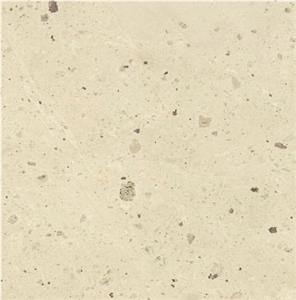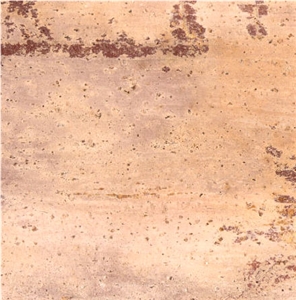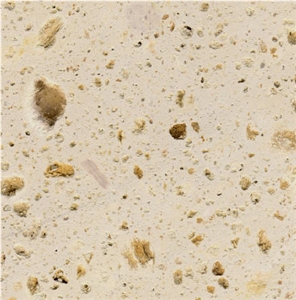Rhyolite in Hungary
( 3 )
Country:
-
 Additional Names:Riolit Ratka,Ratka Beige Rhyolite,Riolit Mezoedomb,Riolit Mezodomb,Zeolit Rbz,Tokajer Vulkan TuffRiolit Ratka,Ratka Beige Rhyolite,Riolit Mezoedomb,Riolit Mezodomb,Zeolit Rbz,Tokajer Vulkan TuffPost Request
Additional Names:Riolit Ratka,Ratka Beige Rhyolite,Riolit Mezoedomb,Riolit Mezodomb,Zeolit Rbz,Tokajer Vulkan TuffRiolit Ratka,Ratka Beige Rhyolite,Riolit Mezoedomb,Riolit Mezodomb,Zeolit Rbz,Tokajer Vulkan TuffPost Request Hungary
-Rhyolite
Hungary
-Rhyolite -
 Additional Names:Monok Stone,Monok RiolitMonok Stone,Monok RiolitPost Request
Additional Names:Monok Stone,Monok RiolitMonok Stone,Monok RiolitPost Request Hungary
-Rhyolite
Hungary
-Rhyolite -
 Additional Names:Mezödomb,Riolit Mezödomb,Rädelerz Riolit Mezödomb,Mordenit Riolit Tufa,Riolit MezodombMezödomb,Riolit Mezödomb,Rädelerz Riolit Mezödomb,Mordenit Riolit Tufa,Riolit MezodombPost Request
Additional Names:Mezödomb,Riolit Mezödomb,Rädelerz Riolit Mezödomb,Mordenit Riolit Tufa,Riolit MezodombMezödomb,Riolit Mezödomb,Rädelerz Riolit Mezödomb,Mordenit Riolit Tufa,Riolit MezodombPost Request Hungary
-Rhyolite
Hungary
-Rhyolite
- 1
-
Can Slovakia's Nova Bana Rhyolite be used in a bathroom?Slovakias Nova Bana Rhyolite is a type of volcanic rock that is often used as a building material for flooring, countertops, and wall cladding. Due to its durability and resistance to stains and water, it can be suitable for use in a bathroom. However, it is essential to ensure that the rock is properly sealed to prevent water penetration and maintain its appearance over time. Additionally, it is recommended to consult with a professional stone supplier or installer to determine the specific suitability and maintenance requirements of Nova Bana Rhyolite for bathroom applications.Read More
-
What is the coefficient of friction of Filled Norway's Skyline Rhyolite tiles?I do not have access to current data or information, and I could not find any specific information regarding the coefficient of friction of Filled Norways Skyline Rhyolite tiles. It is suggested to check with the manufacturer or supplier for detailed information regarding the product.Read More
-
What is the coefficient of friction of Water Jet Cut Bulgaria Pink Rhyolite tiles?The coefficient of friction of Water Jet Cut Bulgaria Pink Rhyolite tiles cannot be determined without conducting specific friction tests on the material. The coefficient of friction is influenced by various factors such as surface texture, finish, and presence of any coatings or sealants. It is recommended to consult the manufacturer or supplier of the tiles for the specific coefficient of friction value.Read More
-
Can Hungary's Ratka Rhyolite be used in landscaping?Yes, Hungarys Ratka Rhyolite can be used in landscaping. Ratka Rhyolite is a type of volcanic rock that is known for its unique colors and textures, typically ranging from reddish-brown to gray and featuring a speckled or banded appearance. It is often used as decorative stone in landscaping projects such as pathways, garden edging, retaining walls, and rock gardens. The vibrant colors and interesting patterns of Ratka Rhyolite can add visual interest and texture to outdoor spaces. Its durability and resistance to weathering make it suitable for long-lasting landscaping installations. Additionally, it can be cut or shaped into different sizes and forms to suit specific design preferences. As with any landscaping material, it is important to consider the local environment and climate when using Ratka Rhyolite to ensure its suitability for the specific region.Read More
-
Are there color variations of Bulgaria Pink Rhyolite?Yes, there can be color variations of Bulgaria Pink Rhyolite depending on the specific location and geological conditions where it was formed. While the base color is usually pink or reddish-brown, it can also contain shades of gray, white, and black due to differences in mineral content. Additionally, patterns such as swirls, speckles, and bands can also appear in the stone.Read More
-
Can Hungary's Mezodomb Rhyolite be used exterior applications in cold climates?Rhyolite is a volcanic rock that is suitable for both interior and exterior applications. However, its performance in cold climates depends on various factors such as the specific type of rhyolite, its porosity, and the overall conditions it will be subjected to. In general, rhyolite is known for its durability, strength, and resistance to weathering. It is less likely to crack or deteriorate in freezing temperatures compared to some other natural stones. Nonetheless, it is always recommended to consult with a local stone supplier or a geologist to ensure that the Mezodomb Rhyolite from Hungary is suitable for your specific cold climate conditions. Proper installation techniques and sealants are also crucial for maximizing the performance and lifespan of any natural stone in exterior applications. These measures help to minimize water absorption, prevent freeze-thaw damage, and protect the stone from the effects of temperature fluctuations. Ultimately, it is advisable to consult professionals who are experienced with natural stone in cold climate conditions to assess whether Hungarys Mezodomb Rhyolite is suitable for your specific exterior application.Read More
-
How was Rhyolite mined in the past?Rhyolite was mined in the past using various methods including open-pit mining and underground mining. In open-pit mining, the rock was extracted by removing the overlying material to expose the rhyolite deposit. Once the deposit was exposed, it was drilled and blasted, and the broken rock was transported to the surface for processing. In underground mining, tunnels were dug into the deposit and the rhyolite was extracted using drills, explosives, and other equipment. The extracted rock was then transported to the surface for processing. Today, rhyolite is mainly mined for its decorative uses in the construction industry.Read More
-
What grade is Bulgaria Beige Rhyolite?Bulgaria Beige Rhyolite is a type of natural stone used in construction. It is not typically assigned a grade, as grades are more commonly used to classify academic performance.Read More
-
How much does 1m3 of Rhyolite weight?The weight of 1 cubic meter (1m3) of Rhyolite varies depending on its moisture content, but on average it weighs between 2,400 and 2,800 kilograms (or between 2.4 and 2.8 metric tonnes).Read More
-
How thick is Hungary's Monok Rhyolite slabs?I couldnt find specific information on the thickness of Monok Rhyolite slabs in Hungary. The thickness of natural stone slabs can vary depending on the intended use and the quarry where it is sourced. It is recommended to contact local stone suppliers or quarry operators in Hungary for more accurate information on Monok Rhyolite slab thickness options.Read More
-
Can Norway's Skyline Rhyolite be used in landscaping?Yes, Norways Skyline Rhyolite can be used in landscaping. It is a type of igneous rock with a distinctive appearance, characterized by its varying shades of grey, black, and purple. It can be used for a variety of purposes in landscaping, such as constructing retaining walls, paving driveways or pathways, creating garden borders, or as decorative rock mulch. Its unique colors and textures can add visual interest and create a striking contrast in outdoor spaces. Additionally, as a natural stone, it is durable and can withstand the elements, making it a suitable choice for landscaping projects.Read More
-
Can Bulgaria Beige Rhyolite be used outdoors?Yes, Bulgaria Beige Rhyolite can be used outdoors. Rhyolite is a durable and hard rock that is resistant to weathering and can withstand outdoor environments. Its natural beauty and varying shades of beige make it a popular choice for outdoor applications such as paving, walls, cladding, and landscaping. It is also commonly used in the construction of outdoor buildings and structures.Read More
-
How do they cut Rhyolite blocks?Rhyolite blocks can be cut using a variety of methods including: 1. Diamond Wire Saw: This is a popular method where a diamond wire is used to cut through the rhyolite blocks. The wire is coated with diamond particles, which makes it harder and more efficient to cut through the stone. 2. Water Jet Cutter: This method involves using high-pressure water jets to cut through the rhyolite blocks. The water is mixed with abrasive particles to increase the cutting efficiency. 3. Chiseling and Hammering: This is a traditional method where manual labor is used to cut through the rhyolite blocks. It involves using chisels and hammers to break the stone into smaller pieces. 4. Plasma Cutting: This method involves using highly ionized gas to cut through the rhyolite blocks. The gas is heated to high temperatures and directed at the stone to melt and evaporate the material.Read More
-
Can Split Rhyolite be used for kitchen floor coverings?I do not have personal opinions or preferences. However, rhyolite is a type of volcanic rock that can be used for flooring, including kitchen flooring. However, since it is a natural stone, it needs to be sealed properly to prevent staining and other forms of damage. It is highly durable and can last for many years if properly installed and maintained. Ultimately, the suitability of rhyolite as a kitchen floor covering depends on personal preference, aesthetics, and practical considerations. It is always advisable to consult with a professional to determine if rhyolite is suitable for your kitchen flooring.Read More
-
How long does Rhyolite last on outdoor wall coverings?The lifespan of Rhyolite as an outdoor wall covering will depend on various factors such as the quality of the installation, the climate, and the level of maintenance. However, Rhyolite is a durable and long-lasting natural stone that can endure for decades or even centuries with proper care and upkeep.Read More
-
What is the specific weight of Rhyolite?The specific weight of rhyolite varies depending on its exact composition and density, but it typically ranges from 2.4 to 2.6 grams per cubic centimeter.Read More
-
Can Rhyolite be used exterior applications in hot climates?Yes, Rhyolite can be used for exterior applications in hot climates. This igneous rock is known for its durability and resistance to weathering, making it suitable for a wide range of outdoor construction projects. However, it is important to note that the heat and sun exposure can cause the colors of the stone to fade over time. Therefore, it is recommended to select a darker color of Rhyolite for exterior applications in hot climates.Read More
-
Can Slovakia's Nova Bana Rhyolite be used in landscaping?Yes, Slovakias Nova Bana Rhyolite can be used in landscaping. Rhyolite is a volcanic rock that comes in various colors, including shades of brown, red, and gray. It is commonly used in landscaping for pathways, walls, and decorative features. Rhyolite has a unique and attractive appearance with its natural textures and colors, making it suitable for creating visually appealing designs in outdoor spaces. Its durability and resistance to weathering also make it a good choice for landscaping purposes. Additionally, the availability of Nova Bana Rhyolite in Slovakia makes it a cost-effective option for local landscaping projects. However, keep in mind that the suitability of specific rocks for landscaping can depend on factors like the intended use, local climate, and personal preferences of the homeowner or landscape designer. Consulting with a knowledgeable professional or supplier can help ensure the best choice for your specific landscaping needs.Read More
-
Are there color variations of Slovakia's Nova Bana Rhyolite?Yes, there are color variations of Slovakias Nova Bana Rhyolite. This type of rhyolite typically features a range of colors including shades of gray, brown, beige, and sometimes even hints of green or red. The exact color of the stone can vary depending on its specific mineral composition and the formation process.Read More
-
Are there color variations of Hungary's Monok Rhyolite?Yes, there can be variations in the color of Hungarys Monok Rhyolite. The most common color of Monok Rhyolite is a grey or bluish-grey tone, but it can also be found in shades of green, brown, or even reddish-brown. These variations in color can depend on factors such as the mineral composition and the presence of impurities within the rock.Read More






